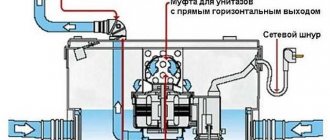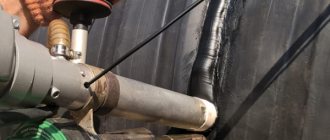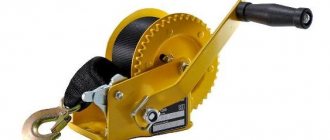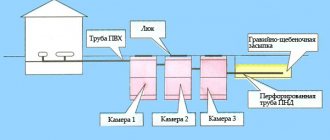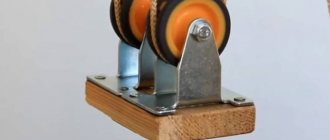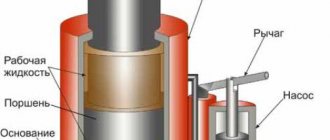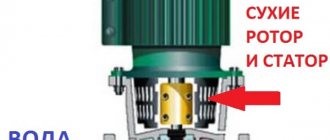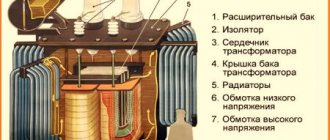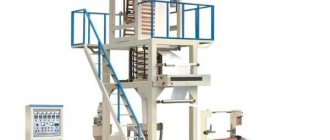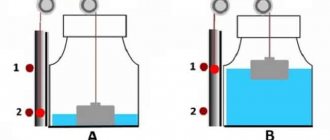Installation of electric winches
The main components of an electric winch are:
- Electric motor. The main task of the power unit is to drive lifting equipment. When calculating the traction force of an electric winch, the power of the motor is taken into account;
- Drum. In the electric winch model, the drum is connected to a gearbox. A cable is wound around the drum, with its help the chain is pulled;
- Frame. Support welded structure, on which the reliability of the entire mechanism depends;
- Brake system. Provides fixation of the cable and prevents its spontaneous movement;
- Cable. The purpose of the product is to secure and move the load. The lifting capacity of the winch depends on the strength characteristics and diameter of the cable. The quality of the cable directly affects the safety of working with load-lifting mechanisms (HLM);
- Launch equipment. The control panel provides convenient operation and precise control from a safe distance;
- Reduction gear. Responsible for smooth rotation of the drum and uniform pulling of the rope, forward movement of the load. The gearbox allows you to adjust the operating speed of the equipment.
Electric winch design and requirements for machine-driven winches
The main requirements for machine-driven winches are light weight, small overall dimensions, lower engine power, and greater rope capacity, for which the dimensions of the winch drum must ensure the possibility of winding a rope of the required length.
A single-drum electric winch (Fig. 5.5.1) consists of a rotating drum 2, which drives an electric motor 6 through a gearbox 9. An open gear drive is connected to the gearbox shaft 8. Gear 3 of the drum is covered with a casing 4. The winch motor is equipped with a shoe brake 7 and a starting switch 5. The drum shaft rests on rolling bearings installed in housings 1 on racks 11. All winch components are mounted on a common frame 10. Electric winches have a load capacity of 0.5; 1; 2.5; 3; 5; 7.5; 10; 12.5; 15t, their rope capacity can be 80 – 900 m or more. Mounting winches are reversible, i.e. the drum rotates in one direction and the other, which is achieved by changing the direction of rotation of the electric motor shaft.
Rice. 5.5.1 Electric installation winch 1 - bearing housing; 2 - drum; 3 - gear; 4 – casing; 5 – switch; 6 – electric motor; 7 – shoe brake; 8 – gearbox shaft with brake pulley; 9 – gearbox; 10 – frame; 11 – stand for the bearing housing;
An electromagnetic brake of a closed type is installed on the coupling between the gearbox and the electric motor, i.e. when the electric motor is turned on, the brake automatically opens, and when turned off, the brake closes, while the brake pads clamp the shaft coupling, preventing it from rotating under the influence of the load. Lower the load with the engine running (Fig. 5.5.2).
Rice. 5.5.2 Double-block spring electromagnetic brake 1- shoe; 2.9 levers; 3 – adjusting nut; 4.5 – springs; 6 – traction; 7 – handle; 8 – rod; 10 – adjusting screw; 11 – electromagnet;
Brake pads 1 are compressed under the action of spring 5, which pulls the pads through levers 9 and 2 with rod 6 and rod 8.
Electromagnet 11, eccentrically mounted on lever 9, with its mass tends to turn this lever to the right.
When the electric motor is turned on, an electric current flows into the electromagnet, which presses the armature on the rod 8 and further compresses the spring 5. Thanks to this, the spring 4 is somewhat expanded and acts on the lever 2, which tends to turn to the left and move the left block away from the clamped pulley. The size of the gap between the pads and the brake pulley, as well as the uniformity of the pads moving away from the brake pulley, are regulated by the degree of compression of spring 4 and screw 10. The degree of compression of spring 4 is regulated by changing the length of the rod with nut 3. Sometimes it is necessary to release the electric winch when the electric motor is on, for example, when lowering a load to small height. This is achieved by turning handle 7 to the right. When turning the handle, the rod will press on spring 5, spring 4 will have the opportunity to unclench and, through lever 2, move the brake pad 1 away from the brake pulley.
Ferrado (asbestos-copper fabric) is fixed to the inner surfaces of the brake pads to increase friction between the pad and the brake pulley.
Comparison table of electric winches produced in Russia
| Image | Type | g/p | V winding | Rope capacity/ rope thickness | Weight |
| LMC-0.25/380V | 250kg | 0.15 m/s | 80m/4.5mm | 70kg | |
| LMCh-040/380V | 400kg | 0.2 m/sec | 80m/5.6mm | 80kg | |
| LMC-0.5/380V | 500kg | 0.3 m/sec | 90m/6.9mm | 85kg | |
| LM-0.25/380V | 250kg | 0.25m/sec | 80m/4.8mm | 75kg | |
| TL-14B/380V | 830kg | 0.35 m/sec | 50m/8.3mm | 220kg | |
| TL-14A/380V | 420kg | 0.72 m/sec | 80m/6.9mm | 235kg | |
| TL-8B/380V | 5.0t | 0.03 m/s | 220m/22.5mm | 1200kg | |
| TL-7A/380V | 5.0t | 0.3m/sec | 250m/ 22.5mm | 2000kg | |
| LM-0.5/380V | 500kg | 0.3m/sec | 90m/6.9mm | 95kg | |
| LM-1/380V | 1.0t | 0.25m/sec | 80/11mm | 275kg | |
| LM-2/380V | 2.0t | 0.29m/sec | 250m/ 13.5mm | 585kg | |
| LM-2R/380V | 2.0t | 0.29 m/sec | 80m/13.5mm | 600kg | |
| LM-2.5/380V | 2.5t | 0.25m/sec | 80/13.5mm | 620kg | |
| LM-3.2/380V | 3.2t | 0.28m/sec | 80m/13.5mm | 980kg | |
| LM-5/380V | 5.0t | 0.2m/sec | 80/14.0mm | 1900kg | |
| U-5120/380V | 630kg | 0.58m/sec | 130m/8.3mm | 250kg | |
| UCH-5120/380V | 630kg | 0.35m/sec | 130m/8.3mm | 250kg | |
| TEL-1/380V | 1.0t | 0.3m/sec | 80m/11mm | 275k | |
| TEL 3.2/380V | 3,2 | 0.035m/sec | 150m/18mm | 950kg | |
| TEL-5/380V | 5.0t | 0.03m/sec | 220m/22.5 | 1200kg | |
Operating principle of electric winches
The operating principle of an electric winch is quite simple. The device contains a transmission mechanism with a drum on which a cable, rope or chain is fixed. The drum drive puts it into action and ensures winding of the cable. Thanks to the presence of a durable body and reliable fastening, the winch is able to withstand significant weight of the object being lifted. Due to the large traction force of the equipment, the actual force required to operate the drum is greatly reduced. Winches are capable of lifting loads weighing several tons.
The main advantages of automotive electric winches
Among the reasons for the popularity of such lifting equipment are:
- high power. There are devices that can free even fairly heavy and large vehicles;
- ease of operation. The mechanisms do not require the muscular strength of the operator, this makes it possible to quickly and easily release the weight from a difficult place;
- high rope capacity. In some cases, the cable can reach several tens of meters. Thanks to this, it will not be difficult to find a suitable immovable object on which you can hook the hook;
- high speed of cable winding. Thanks to this, the entire process takes a minimum of time;
- compact dimensions. In most cases, the winch is attached to the SUV itself. As a result, it does not take up space in the trunk, and installation does not require time;
- increased stability. The mechanisms are not afraid of dust, dirt and moisture. They can be used under any circumstances.
Classification of cargo winches
Lifting equipment is distinguished according to the following criteria:
- Type of food. The devices can operate from an electrical network of 220V and 380V. 12 V devices are also available that can operate on battery power;
- Installation method. The choice of installation type depends on the type of device - portable electric or stationary winch. Mobile devices weigh up to 50 kg, so they do not require complex installation work. They can be moved from place to place. Stationary models are highly powerful and cope well with increased loads, suitable for intensive work. Their installation must be carried out in strict accordance with the installation instructions;
- Operating principle. Lifting equipment is divided into hydraulic, worm, etc.;
- Type of traction element of the system. There are chain and cable winches, single and multi-drum, with one or several speeds.
Small winches
The advantages of the devices include light weight (does not exceed 40 kg), the presence of a 200V or 12V electric motor and low cost. Such electric winches are popular in small workshops and at home. The lifting capacity of the mechanisms is on average 1-2 tons, the speed of lifting loads is low. Small-sized winches can be mounted on a beam equipped with a movable carriage.
Planetary winches
The gearbox of the device contains, instead of one, several driven gears. Due to the planetary design, high gear ratios are ensured with compact dimensions of the lifting mechanism (HLM). Planetary winches are lightweight, have a load capacity of up to 500 kg, and operate on a 220V network (industrial models - from 380V).
Mounting winches
The equipment contains an electric motor with a power of 7 kW, lifts loads weighing over 600 kg, and the lifting speed is up to 12 m/min. The device has a drum with increased rope capacity. The significant weight of the winch does not allow it to be suspended; installation on horizontal surfaces is only possible. The main tasks of installation electric winches are lowering and lifting loads.
Traction winches
The task of the traction mechanism is to provide traction force. Winches of this type are not used for lifting loads. For example, a car winch can move a loaded pallet or pull out a stuck vehicle. The equipment is characterized by an increased speed of cargo movement up to 35 m/min, but at the same time has a reduced rope capacity.
Shunting winches
The device is designed for moving platforms, tanks, railway cars, gondola cars, and performing auxiliary work on moving cargo in the horizontal direction located on rail tracks. Powerful models are capable of moving up to 17 loaded cars with a total weight of 1,200 tons. Shunting winches are installed near rail warehouses, which makes it possible to abandon shunting diesel and electric locomotives.
Types of winches
To date, manufacturers have developed the following types of winches:
- manual;
- electrical;
- traction;
- shunting;
- scrapers;
- drilling;
- automobile.
Each of them has its own design features. They are divided into two and multi-drum winches.
The first type has a lever mechanism that manually moves a drum with a wound rope. This mechanism has a rod or drum with a fixed lever. The operating principle of such systems is based on pulling the rope through a mechanism and winding it onto a drum. A load-grasping mechanism (for example, a hook) is attached to the end of the rope.
In electrical devices, the entire mechanism is driven by an electric motor. This significantly expands technical capabilities and allows you to move heavier loads.
Traction units are attached to a horizontal or vertical surface and are used for various types of construction and installation work. With their help, construction lifting devices are formed.
The shunting winch is used in railway transport to move cars over short distances. They are electric or pneumatic with one or two drums.
Drilling drawworks are used at drilling sites when installing or removing casing pipes. Scraper systems are installed in quarries to move rock masses during mining.
The main advantage of using such devices is the ability to replace complex and expensive lifting and transport mechanisms.
Key factors for choosing winches
In addition to carrying capacity, important criteria for choosing equipment are:
- Traction force. Determines the maximum permissible weight load. This parameter is influenced not only by the weight of the load, but also by the friction factor (resistance to movement), the lifting factor (the load is pulled up or forward). For different models, the traction force can range from 0.2 to 5 tons;
- Voltage. Engine power can vary between 0.28-20 kW. This characteristic has a direct impact on performance. For stationary use, it is better to choose devices operating from a 200V and 380V network, with the ability to connect to a single- or three-phase network, respectively. Automotive models can operate from the on-board vehicle network with a voltage of 12-24V;
- Rope length. The cable can have a length from 5 to 100 m. This parameter determines the height to which heavy loads can be carried;
- Winding speed. The parameter depends on the power of the device. For example, an electric winch with a power of 1.6 kW is capable of mixing 500 kg of cargo at a speed of 10 m/min.
Also, when choosing a device, it is important to pay attention to its weight and dimensions.
How to choose a winch
When choosing a lifting device, first of all, pay attention to the parameters of the load and the height (distance) of the lift. In this case, a certain reserve of lifting capacity of the winch or hoist is provided.
The reserve carrying capacity is taken to be 15-30% of the nominal value.
It is also necessary to take into account that when using a winch to lift loads, the lifting capacity is 2 times less than the traction force.
The length of the traction element is selected in accordance with the required lifting or moving height. The supply of cable or chain on the drum should be 5-10 turns. A larger supply of traction element leads to an increase in unit weight and cost.
Decide on the frequency of use and the required speed of operation. If you frequently use a winch, you cannot do without an electric drive; if you intend to lift loads from time to time, limit yourself to a manual drive.
In addition to being energy independent, a manual winch is more reliable in operation and much cheaper.
When using an electric drive, it is necessary to check the compliance of the electrical network with the power consumption and the number of phases of the electric drive or take care of purchasing an autonomous generator of the appropriate power.
If you choose a device with a manual drive, you need to take into account that a worm gearbox is slower than a gear gearbox. The installation height is also taken into account - only devices with a chain drive can be suspended at a height; gear and lever devices require direct force on the lever or handle.
When choosing between a cable and a chain, the lifting height is taken into account; chains are used when lifting loads to a height of 3-5 meters.
An important factor when choosing is the weight and dimensions of the device.
Pay special attention to the weight of the mechanism if it is intended to be used non-stationary or at height.
Overall (installation) dimensions must be checked if it is necessary to attach the winch to the supporting surface.
When considering the design of the lifting device, pay attention to the following points:
- the diameter of the drum, it should not be too small to prevent damage and kinks of the rope;
- reliability of fastening of the cable to the drum, the cable must be held securely in the unwound state;
- the material of the body, drum, fastening parts, brake parts must be of high quality; their breakage and deformation lead to the loss of the load;
- quality of welds, unevenness and other welding defects are not allowed;
- threaded connections must be fully tightened using lock washers and nuts to prevent loosening;
When choosing an electric drive, pay attention to the control panel - there must be an emergency stop button, it is advisable that the buttons be covered with a silicone cover to protect them from dust and moisture.
Which lifting device is better?
It is impossible to determine the best device; the best lifting device is one that corresponds to the task being solved with an optimal price-quality ratio.
The carrying capacity of the mechanism is selected based on the condition of operating with a load of 70-85% of the nominal load, which corresponds to the optimal ratio of cost to loading capacity. For an actively used mechanism, using an electrically driven device would be the best solution.
In terms of product durability, purchasing products from European brands or reputable Russian manufacturers would be the right choice.
Electric winch connection diagram
Working with an electric winch involves certain risks and is classified as a dangerous activity. The device should be operated with the utmost care and attention, strictly following the operating instructions. Before you start using the lifting device, you should carefully study the connection diagram and connect all the wires in the specified sequence. If you plan to connect to a 220V network, 3 wires will be attached to the mounting block (phase, neutral, ground). When connecting an electric hoist to a three-phase system, you will need to connect 4 wires (3 phases and zero). If, after connecting the mechanism, the drum rotates in the other direction, this means that the 2 outermost wires of the existing three, on which the phase is connected, need to be swapped. The correctness of its operation depends on the correct connection of the mechanism.
Particular attention should be paid to the condition of load-handling elements, ropes, cables. If there are deformations, cracks or signs of wear, the cables will have to be replaced. The rope hook must be positioned vertically above the load. Before turning on the device, you need to make sure that there are no strangers in the working area, that the mounting points are secure, and that the power lever is in the non-working position. The serviceability of the braking device is checked at idle speed. It is prohibited to change the direction of travel until the equipment has completely stopped. The load must be unslinged after it has been completely lowered and secured.
It is strictly prohibited to carry out repairs or maintenance on the winch during operation. An electric winch must not be left unattended while it is on. If it is difficult to understand the connection and features of using lifting equipment on your own, you should enlist the help of a more experienced specialist.
